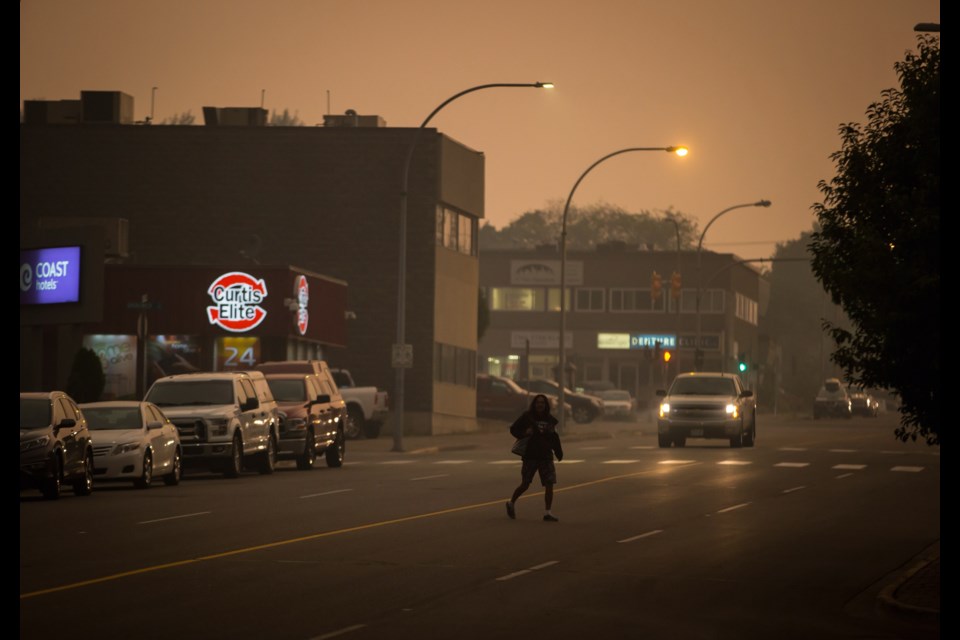This past summer, communities across B.C. — and all of Canada — rode the unstable ups and downs of severe heat and historic droughts, floods and wildfires.
With the darker and wetter days of winter upon us, summer might feel a long way off. But the smoky skies and flood wreckage of last summer are still in recent memory, and we don’t want to be caught off guard. Now is the time to reflect on what we learned from 2018 to prepare for what’s ahead.
For years, scientists have warned that we are approaching a tipping point at which the global climate would enter an unpredictable new state — a tipping point that we likely wouldn’t recognize until long after we had crossed it. Some of the most respected climate scientists in the world believe we might have crossed that invisible threshold in the summer of 2018, and that we are now in a new and turbulent climate regime in the Northern Hemisphere.
Upon what basis can the claim that we have entered a new climate regime be made? The evidence begins with our growing ability to measure the extent of human influence on the intensity, frequency and duration of extreme-weather events globally.
For example, it is now held that the sweltering Northern Hemisphere summer of 2018 would have been half as likely to occur were it not for human-induced global warming. Recent research done in part by the Pacific Climate Impacts Consortium demonstrates that during the current decade, the combined outcome of natural and human-caused effects on climate is estimated to have made extreme fire-risk events in Western Canada 1.5 to six times more likely compared with a climate unaffected by human influence.
The question of who is liable when it comes to climate disruption is a global challenge. In the wake of the disastrous summer of 2018, municipalities in British Columbia contemplated class-action lawsuits against the world’s largest fossil-fuel producers to recover damages from yet another devastating provincewide fire season.
While the Paris Agreement allows for examination of the risks of damage and displacement with respect to the impacts of climate disruption, it does not allow attribution of blame, suggestions of liability or recommendations for compensation. The question of who is going to pay remains an open one. We simply do not know.
What we do know is that inaction will continue to cost — not just economically, but increasingly in terms of infrastructure damage. The growing strain that ongoing climate disruption will have on our already stressed public-health system also cannot be ignored.
Rather than merely despairing about these issues, we need to channel these feelings of anxiety to work for the future of humanity. Yes, humans are influencing climate change, but we can also do something about it.
British Columbians are beginning to realize that the most important effects of climate change have to do with the presence or absence of too much water, and the effects on ecosystem resilience. Warm water temperatures put additional stress on salmon during their migration to spawn, and fire-ravaged watersheds might not be reliable sources of clean drinking water.
B.C. has taken strides toward linking climate-impact challenges to local solutions, including the province’s new Water Sustainability Act, which was brought into force in 2016. While the provincial government still has work to do, government cannot develop the necessary solutions alone. Active roles must exist for Indigenous nations (such as government-to-government forums), communities, watershed entities and water users. A groundswell of local leadership on water is already building in B.C. to develop and implement the necessary mix of solutions to address specific regional water issues.
Across the country, governments at all levels — from federal to local — must use their best available tools to protect fresh water and ensure ecosystems and communities are resilient in the face of increasing climate unpredictability and threats to water security.
Thinking back to summer 2018, most would agree that the spectre of smoke-filled skies and devastating fires is not what we hope for the future. We have work to do, and the time to act is now. As we dream of carefree summer days ahead — for ourselves and for generations to come — we have no time to lose.
Bob Sandford holds the EPCOR Chair in Water and Climate Security at the United Nations University Institute for Water, Environment and Health, which is located in a UN enclave on the campus of McMaster University in Hamilton, Ont. Laura Brandes is the communications director at the POLIS Water Sustainability Project, based at the University of Victoria’s Centre for Global Studies.



